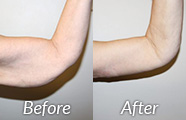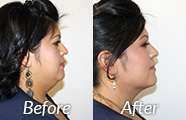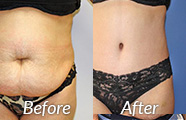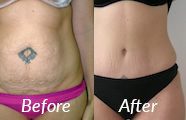Breast Implant Illness
Conveniently located to serve the areas of Santa Monica, Beverly Hills and Greater Los Angeles
Breast implant illness (BII) is a term used by many patients to describe a large number of symptoms that are caused by the presence of breast implants. Currently breast implant illness (BII) is an unrecognized medical condition, affecting many women worldwide. The condition occurs in both patients with silicone as well as saline-filled breast implants. Presently there are no specific physical examination findings or laboratory tests that can explain the patient’s symptoms. Thus, most patients come to this diagnosis after all other diagnoses have been excluded. Ultimately BII is a self-reported diagnosis.
Contents
- 1 What are the Symptoms of Breast Implant Illness?
- 2 How is Breast Implant Illness Diagnosed?
- 3 What are the Causes of Breast Implant Illness?
- 4 What are the Options for Capsulectomy?
- 5 When Does Dr. Zarrabi Perform Capsulectomy in BII patients?
- 6 Treatment of Breast Implant Illness
- 7 Treatment Options Available to Patients with BII
- 8 Recovery After Breast Implant Illness
- 9 Your Breasts After Implant Removal
- 10 A Message from Dr. Zarrabi regarding Breast Implant Illness
- 11 Book a Consultation
- 12 Important Studies to Consider
- 13 References
What are the Symptoms of Breast Implant Illness?
Breast implant illness is an umbrella term that encompasses a variety of symptoms experienced by women with breast implants, such as:
- Chronic fatigue
- Arthralgias (joint pain)
- Myalgias (muscle aches & pain)
- Depression
- Hair loss
- Difficulty swallowing
- Cognitive dysfunction including memory loss
- Skin rashes
- Sleep disturbance
- Headaches
- Flu-like symptoms
These symptoms can range from mild to severe. The symptoms associated with BII currently are extremely broad and can sometimes mimic other illnesses or diseases.
How is Breast Implant Illness Diagnosed?
The diagnosis of breast implant illness is often difficult as the symptoms are non-specific and may appear similar to other illnesses or diseases. It is important to note that there is no universal test to diagnose BII. It’s important to consult first with your primary care physician to rule out other diagnoses.
What are the Causes of Breast Implant Illness?
Many breast implant illness websites, social media groups, and patients state that the heavy metals and toxins found inside implants are the cause of the breast implant illness. Others feel that the bacteria or fungi that may be found around the breast implant known as biofilm, are the cause of their illness. Many patients feel that the implant as well as the surrounding scar tissue, known as the capsule, needs to be removed for their symptoms to resolve. In addition, patients will request “en-bloc” removal of the implant and capsule. Understandably, if the implant is the source of toxins, then the capsule which surrounds the implant, likely contains the toxins as well, and should be removed.
As a patient it is very important to understand that these causes of breast implant illness and above suggested treatments are currently unsupported by the current medical literature and more studies need to be performed. It’s important to realize that within the medical community, this is a highly controversial issue, there are only a few good studies that have been performed, and additional studies need to be performed in order to better understand this phenomenon. Lastly, not only do we not have a lot of good information on the subject but there is a lot of very bad information as well as misinformation provided by non-practitioners.
Fortunately, there are published reports in medical journals that do show patients will have improvements of their symptoms after the implants are removed (1). Despite what most websites and social media sites report, there is no clinical study to date that supports the idea that capsulectomy must be performed in order for patients to feel better. There are currently two landmark studies that were recently published that do shed light on the diagnosis and treatment of BII. These studies are discussed later on this page.
What are the Options for Capsulectomy?
Simply put, capsulectomy involves the removal of the scar tissue capsule that surrounds the implant. There is much confusion amongst patients regarding the terms and techniques of removing an implant capsule. I think it’s important to define these terms.
En-bloc Capsulectomy
This is a well-recognized technique to manage patients with breast implant-associated anaplastic large-cell lymphoma (BIA-ALCL), which involves removal of an implant with an intact capsule and any involved soft tissues or breast tissue surrounding the capsule. This term is often used by patients to define an implant that is removed while enclosed within its intact capsule. True en-bloc capsulectomy should really only be used in patients with known malignancy (cancer) such as BIA-ALCL, as this is a technique used in patients with known cancer.
Complete Capsulectomy
The complete removal of the capsule. This can be performed by leaving the implant in place without violating the capsule. I prefer to call this “intact implant capsulectomy”. The other option of complete capsulectomy involves removing the implant first, followed by complete removal of the capsule.
Partial Capsulectomy
This is the removal of some portion of the capsule, but not its entirety.
When Does Dr. Zarrabi Perform Capsulectomy in BII patients?
Reasons to perform a complete capsulectomy, after a proper consultation, include patients with a known ruptured silicone implant, history of textured implants, capsular contracture, and patient preference. In patients who have a known silicone implant rupture, a complete and intact capsulectomy ensures that the free silicone from the ruptured implant does not escape from the capsule, and thus remains behind within the patient’s breast tissue. The rare cancer known as breast implant-associated anaplastic large-cell lymphoma (BIA-ALCL) is linked to textured implants. One could argue that in order to lower or eliminate the future risk of BIA-ALCL, a complete capsulectomy should be performed. This, however, has not yet been scientifically proven. Some patients with capsular contracture may have an unknown implant rupture, are concerned about biofilm, or just don’t want a thickened capsule left behind and would prefer complete capsulectomy. Lastly, some patients may still prefer complete capsulectomy as it will give them peace of mind. There is, however, currently no evidence that removing a thin, asymptomatic capsule provides any benefit to the patient.
Ultimately it is critical that the patient and surgeon have a thorough conversation about their concerns, anatomy, goals, and risks, before determining a treatment plan.
Are There Risks Associated with Capsulectomy?
Complete capsulectomy, and intact complete capsulectomy carries with it increased risks of complications. These risks include a higher chance of bleeding during surgery, blood clot (hematoma) after surgery, puncture of the lung known as pneumothorax, and the need for a larger incision. In addition, complete capsulectomy and intact complete capsulectomy are more likely to cause contour deformities, irregularities, and poor aesthetic outcome. This is particularly true when patients do not have a significant amount of their own natural breast tissue. Patients who have subglandular implants (implants placed on top of the muscle) are particularly at risk for developing severe deformities from the capsulectomy and implant removal.
Treatment of Breast Implant Illness
It is critical to understand that there is currently no consensus on treatment of BII. The idea that intact implant capsulectomy is the ONLY treatment option to be offered to patients with BII is not only false but harmful to many patients. Although most patients who I treat will elect to have either intact complete capsulectomy or simply complete capsulectomy, all treatment options, including their benefits and risks should be discussed with the patient prior to deciding.
Treatment Options Available to Patients with BII
- Implant removal without removal of the capsule.
- Implant removal and partial capsulectomy.
- Implant removal and complete capsulectomy.
- Implant removal and intact complete capsulectomy
In many cases, simply removing the implants can be enough to alleviate the symptoms and provide relief. In one study, around 60% of the women suffering from BII symptoms who had their implants removed experienced a decline in symptoms. Dr. Zarrabi will work with you to determine a treatment plan to help you live a full life after BII.
Recovery After Breast Implant Illness
Once breast implant illness is treated, the recovery process can vary depending on each patient’s individual symptoms and health. In some cases, a full recovery may take a few weeks, but severe cases could take months or even years. If you think you may have BII, contact Dr. Zarrabi today so he can help you determine the best course of action for your recovery.
Your Breasts After Implant Removal
If you do end up removing your implants for any reason, rest assured that you are in great hands. Dr. Zarrabi has extensive experience in performing breast implant removal surgeries, and the Zarrabi Plastic Surgery team is dedicated to helping you achieve the look that best suits your needs and goals.
One option to restore your breast profile after implant removal is to consider fat grafting; this procedure involves removing fat from another area of the body, such as the abdomen and hips, and transferring it to your breasts to help fill in the area and create a natural-looking breast shape.
A Message from Dr. Zarrabi regarding Breast Implant Illness
I want patients to understand a few things about my attitude and opinions about breast implant illness. I do perform breast augmentation, as well as taking care of patients who have breast implant illness. My entire goal and sole desire in treating patients is to take care of them. I want my patients who have breast implant illness to feel better. With every patient, I feel that a thorough consultation and discussion needs to take place. Only after that do we come to a decision about what type of approach we need to take. There is no one style that fits all. Each patient has different goals in mind, different bodies, and desires, that need to be addressed individually.
If you think you have BII, contact Dr. Zarrabi today to get the help you need. He will work with you to determine a treatment plan that is best for your unique needs and concerns.
Book a Consultation
Dr. Zarrabi will discuss all your options with you and help you find the best solution for your individual needs. During your consultation, he will answer any questions you have, discuss the risks and potential complications of breast implant surgery, and provide you with the best care to make an informed decision regarding your health and safety.
We are committed to providing our patients with top-of-the-line care and treatment at Zarrabi Plastic Surgery. Call our Santa Monica and Beverly Hills offices today to book a consultation.
Call (310) 584-9990 to reach our Santa Monica and Beverly Hills offices.
Important Studies to Consider
Impact of Capsulectomy Type on Post-Explantation Systemic Symptom Improvement: Findings From the ASERF Systemic Symptoms in Women-Biospecimen Analysis Study: Part 1. Caroline Glicksman, MD, MSJ, FACS, Patricia McGuire, MD, Marshall Kadin, MD, Marisa Lawrence, MD, Melinda Haws, MD, Jill Newby, PhD, Sarah Ferenz, BA, James Sung, MD, FCAP, Roger Wixtrom, PhD
This was a landmark study performed to determine if “en bloc” capsulectomy is necessary for long-term symptom improvement. 150 patients were enrolled in the study and underwent either intact complete capsulectomy, complete capsulectomy, or partial capsulectomy. The patients were followed for six months. The authors found that the type of capsulectomy; intact total, total, or partial all showed similar symptom improvement with no statistical difference in the reduction of symptoms based on the type of capsulectomy. The findings show that patients who self-report BII demonstrate a statistically significant improvement in their symptoms after explantation and that this improvement persists for at least 6 months. This improvement in self-reported systemic symptoms was seen regardless of the type of capsulectomy performed.
Heavy Metals in Breast Implant Capsules and Breast Tissue: Findings from the Systemic Symptoms in Women–Biospecimen Analysis Study: Part 2 Roger Wixtrom, PhD, Caroline Glicksman, MD, MSJ, Marshall Kadin, MD, Marisa Lawrence, MD, Melinda Haws, MD, Sarah Ferenz, BA, James Sung, MD, FCAP, Patricia McGuire, MD
This was the second part of the study that aimed to determine whether heavy metals are present in the capsules around saline and silicone implants and if there are statistical differences in the type or level of these metals between women with or without symptoms. 150 patients were enrolled in the study and divided into three groups: 1) Women with self-reported BII, 2) Women with breast implants but did not report BII, and 3) women who never had breast implants. Capsule tissue that was removed was analyzed for 22 heavy metals. Heavy metal content was compared between the capsule tissue from Groups 1 and 2. The only statistically significant differences identified in Group 1 were higher levels of arsenic and zinc, and lower levels of cobalt, manganese, silver, and tin. There were no elevated levels or statistically significant differences in the other metals tested between Groups 1 and 2. Heavy metals were also detected in the non-implant Group 3 breast tissue. In Group 3 (patients who never had implants), some had higher levels of metals than patients in Group 1 and 2 (patients with breast implants). Smoking, gluten-free diets, dietary supplements, and the presence of tattoos were all identified as statistically significant sources of arsenic and zinc in Group 1.
References
1. Melmed EP. A review of explantation in 240 symptomatic women: a description of explantation and capsulectomy with reconstruction using a periareolar technique. Plast Reconstr Surg. 1998; 101(5):1364-1373.














